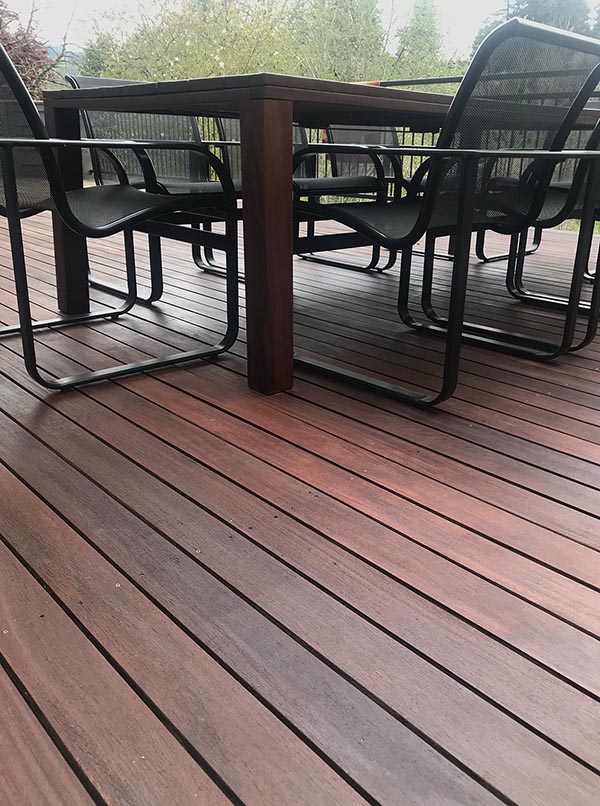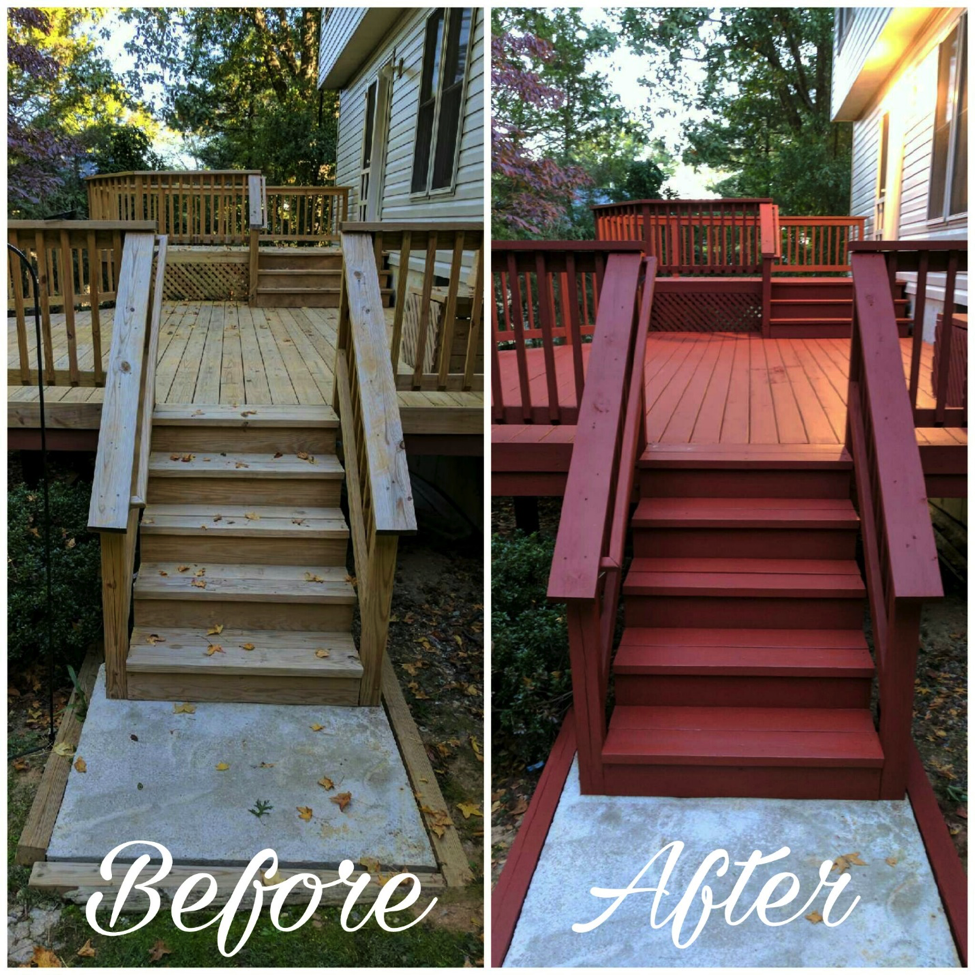Rejuvenate Your Outdoors: Specialist Deck Staining Services
Rejuvenate Your Outdoors: Specialist Deck Staining Services
Blog Article
Selecting the Right Stain for Your Fence: Tips and Considerations
When it comes to improving the appearance and preserving of your fencing, choosing the best discolor is crucial. We will explore the different types of fence discolorations, factors to think about before selecting a stain, ideas for preparing your fencing for staining, and the differences between water-based and oil-based stains. Furthermore, we will certainly delve into selecting the best tarnish color to match your fence and enhance your outside area.
Comprehending Various Sorts Of Fence Stains

On the various other hand, water-based stains are made from acrylic or latex and offer a much more subtle shade to the wood. They develop a protective film on the surface area of the wood, protecting against wetness from permeating in and securing against UV damage. Water-based spots are less complicated to tidy up and have a faster drying out time contrasted to oil-based discolorations. They are additionally much less most likely to discolor or split gradually.
Picking between oil-based and water-based spots relies on numerous elements, consisting of personal preference, the desired look, and the degree of maintenance required. Oil-based stains are recommended for fences in high-traffic areas or those continuously subjected to extreme climate condition. fence staining. Water-based spots, on the other hand, are a popular choice for fence domestic areas where appearance and convenience of usage are vital
Recognizing the distinctions between oil-based and water-based stains helps home owners make an educated decision when selecting the appropriate tarnish for their fence. Taking into consideration the particular needs of the fencing, such as its place, exposure to sunshine, and desired aesthetic, will make certain that the picked stain gives resilient protection and improves the overall appeal of the fencing.
Variables to Consider Prior To Choosing a Stain

Various types of wood take in spots in a different way, resulting in differing degrees of shade intensity and durability. In addition, particular woods might be much more susceptible to problems like rot or insect infestation, which may affect the selection of tarnish to safeguard and maintain the fencing.
The environment and weather in your location ought to additionally be taken right into account. You may need a discolor that provides extra security versus moisture and UV rays if you live in a location with severe winters or high moisture. If your fencing is subjected to direct sunshine for lengthy durations, a tarnish with UV inhibitors can aid prevent fading and discoloration.
Finally, it is very important to consider your wanted aesthetic. Different stains supply various colors and finishes, enabling you to personalize the appearance of your fence (deck staining). Take into consideration the general design and style of your building, in addition to any neighborhood policies or property owner association guidelines that might determine the appropriate stain shades
Tips for Preparing Your Fencing for Discoloration
To prepare your fence for staining, start by extensively cleansing the surface area utilizing a light cleaning agent and a stress washer or scrub brush. Cleaning up the fencing is a vital step as it removes dirt, grime, and any type of previous coatings that might disrupt the discoloration process. Begin by wetting the fencing with water and afterwards apply a moderate cleaning agent making use of a scrub brush or a stress washing machine with a low-pressure setup. Rub the surface delicately, paying extra interest to areas with stubborn spots or mold and mildew. Wash the fence completely with tidy water to get rid of all traces of cleaning agent.
This step is important as staining a wet or damp surface area can lead to inadequate adhesion and an unequal coating. Make certain that the fence is totally dry prior to continuing with the staining procedure.
Prior to staining, examine the fencing for any problems, such as loosened boards or nails. This product assists to open up the wood pores, enabling the tarnish to penetrate a lot more effectively and uniformly.

Comparing Oil-Based and Water-Based Discolorations
When choosing a stain for your fencing, it is essential to compare the features and advantages of oil-based and water-based discolorations. Both kinds of discolorations have their own advantages and factors to consider, so it is important to understand the distinctions between them.
Oil-based stains are recognized for their toughness and resistance to damage. They permeate deeply into the timber, offering excellent security against the elements. They also enhance the natural elegance of the wood by highlighting its grain and structure. Additionally, oil-based spots often tend to last longer than water-based stains, making them a prominent selection for fences.
On the various other hand, water-based spots are extra eco-friendly and easier to tidy up. They have a reduced VOC (volatile organic substance) content, which implies they launch less dangerous fumes right into the air. Water-based discolorations also dry faster, enabling a quicker application and less downtime. They might not give the very same degree of security as oil-based spots, particularly in extreme weather condition conditions.
Eventually, the choice in between water-based and oil-based discolorations depends upon your particular needs and choices. Take into consideration aspects such as durability, ecological effect, and simplicity of application when making your choice. Consulting with a specialist or seeking recommendations from experts can additionally assist guarantee that you Your Domain Name pick the right tarnish for your fencing.
Selecting the Right Stain Shade for Your Fencing
The choice of a proper stain shade for your fence is a vital facet of improving its aesthetic charm and complementing the total design of your outdoor area (deck cleaning). The right discolor shade can change a plain, common fencing into a striking centerpiece that includes deepness and personality to your home
When selecting a tarnish shade for your fence, it is essential to think about the design and style of your home. If you have a traditional or standard design home, natural tones such as neutrals and browns can develop a cozy and welcoming appearance. On the other hand, if you have a contemporary or contemporary home, you may think about choosing for strong and dynamic colors that make a statement.
Another factor to consider is the natural environments of your property. If you have a lot of plant, a tarnish color that matches the natural landscape, such as greens or deep reds, can develop a natural and unified look.
Furthermore, it's worth considering the upkeep required for various tarnish colors. Lighter shades often tend to show dirt and put on more easily, while darker shades can hide imperfections and call for much less regular touch-ups.
Ultimately, the selection of discolor shade for your fencing should mirror your individual style and choices - deck staining companies near me. Put in the time to seek advice from and explore various options with experts if required, to ensure that you pick the ideal discolor shade that improves the charm and allure of your fence
Final Thought
In final thought, when it comes to selecting the best discolor for your fence, it is important to recognize the various kinds of spots available and consider factors such as resilience and desired look. Picking the ideal stain color can boost the general aesthetic appeals of your fence.
We will discover the different types of fencing spots, factors to consider prior to selecting a stain, tips for preparing your fencing for staining, and the distinctions in between oil-based and water-based discolorations.Setting apart between water-based and oil-based stains is critical when comprehending different kinds of fence spots. Water-based stains are less complicated to clean up and have a much faster drying time contrasted to oil-based spots. Additionally, oil-based spots tend to last longer than water-based spots, making them a preferred option for fencings.
In verdict, when it comes to choosing the best tarnish for your fence, it is crucial to understand the different kinds of spots available and consider factors such as resilience and desired look.
Report this page